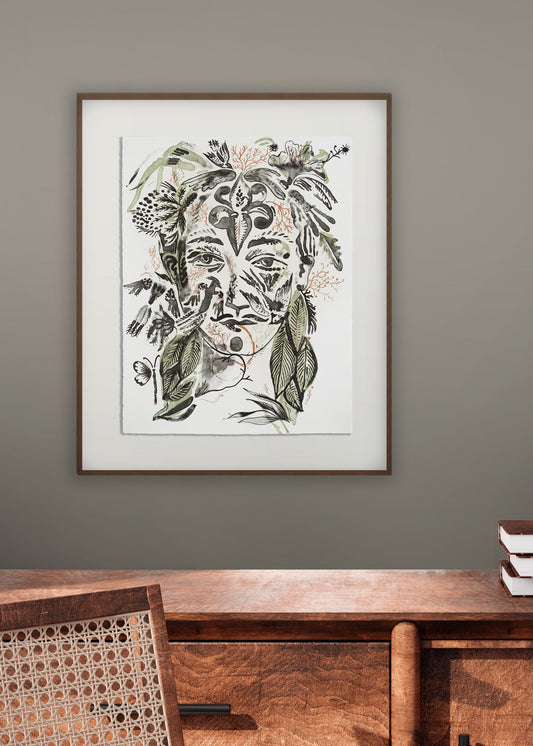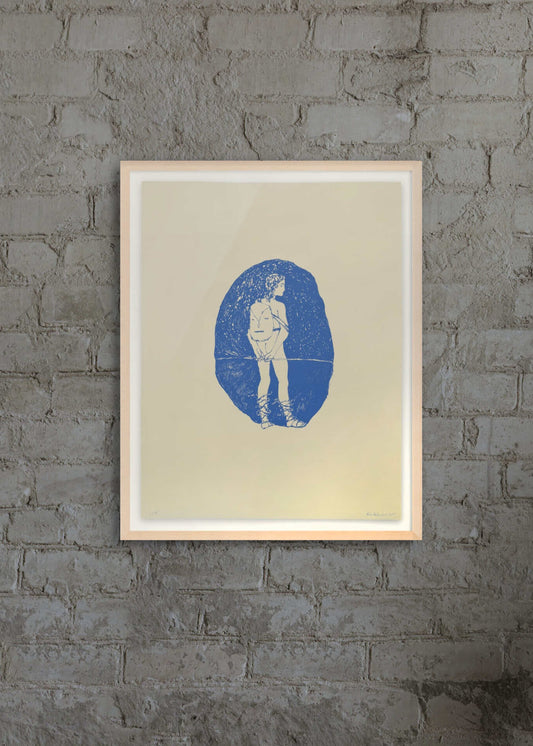Lithography is a fine art printmaking technique that belongs to the planographic family of printmaking. Unlike intaglio or relief processes, lithography relies on the natural repulsion between oil and water rather than carving or engraving a surface. The artist draws an image directly onto a smooth stone or metal plate using a greasy medium such as a lithographic crayon or tusche. After chemical treatment, the drawn areas attract ink, while the untouched areas repel it when moistened with water.
Once the drawing on the stone or plate is complete, the surface is treated with a solution of gum arabic and nitric acid to fix the image. The artist then dampens the surface with water, that is absorbed only by the non-image areas, and rolls oil-based ink over the plate. The greasy drawing holds the ink, while the wet areas remain clean. A sheet of paper is placed on top, and the plate or stone is run through a lithographic press, transferring the image onto the paper.
Invented in the late 18th century by Alois Senefelder, lithography quickly became a favored medium among artists for its ability to reproduce delicate tonal variations and spontaneous marks. In the 19th century, artists like Honoré Daumier and Henri de Toulouse-Lautrec used lithography for both artistic expression and mass communication, from fine art prints to posters. Today, contemporary artists continue to experiment with lithography. German artist Peter Böhnisch combines traditional stone lithography with expressive figurative imagery. Similarly, Olaf Hajek employs lithography to explore themes of nature and mythology, using layered color and intricate detail.
Beyond traditional stone lithography, artists now use aluminum plates and photo-lithographic techniques that integrate digital imagery with hand-drawn elements. This has opened new creative possibilities, allowing for greater experimentation in scale, layering, and color blending. Contemporary practitioners combine lithography with other printmaking methods or mixed-media processes to achieve complex visual effects.
As a planographic printing technique, lithography differs from intaglio or relief techniques. Within the intaglio family, etching remains one of the most celebrated techniques. The process involves incising a metal plate with acid to create grooves that hold ink. In contrast, the woodcut, a traditional relief technique, requires carving away the surface of a wooden block so that the raised areas receive the ink.



